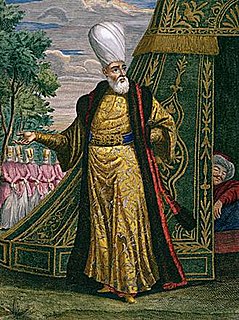 W
WAgha, also Aga, is an honorific title for a civilian or military officer, or often part of such title, and was placed after the name of certain civilian or military functionaries in the Ottoman Empire. At the same time some court functionaries were entitled to the agha title.
 W
WAmmachi Panapillai Amma was the title held by the consort of the ruling Maharajah of Travancore as well as those of other title-holding male members of the Travancore Royal Family.
 W
WUntil the end of the Ethiopian monarchy in 1974, there were two categories of nobility in Ethiopia and Eritrea. The Mesafint, the hereditary nobility, formed the upper echelon of the ruling class. The Mekwanint were the appointed nobles, often of humble birth, who formed the bulk of the aristocracy. Until the 20th century, the most powerful people at court were generally members of the Mekwanint appointed by the monarch, while regionally, the Mesafint enjoyed greater influence and power. Emperor Haile Selassie greatly curtailed the power of the Mesafint to the benefit of the Mekwanint, who by then were essentially coterminous with the Ethiopian government.
 W
WA chamberlain is a senior royal official in charge of managing a royal household. Historically, the chamberlain superintends the arrangement of domestic affairs and was often also charged with receiving and paying out money kept in the royal chamber. The position was usually honoured upon a high-ranking member of the nobility (nobleman) or the clergy, often a royal favourite. Roman emperors appointed this officer under the title of cubicularius. The papal chamberlain of the Pope enjoys very extensive powers, having the revenues of the papal household under his charge. As a sign of their dignity, they bore a key, which in the seventeenth century was often silvered, and actually fitted the door-locks of chamber rooms. Since the eighteenth century, it has turned into a merely symbolic, albeit splendid, rank-insignia of gilded bronze. In many countries there are ceremonial posts associated with the household of the sovereign.
 W
WThe Court Marshal of Denmark is Chief Administrative Officer of the Royal Household of Denmark. The Court Marshal is the chief executive of finance, staff, official duties, etc. and heads the Court Marshal's office. The Lord Marshal of the Court of Denmark has a place in the 1st Class of the Danish Order of Precedence, while the Court Marshal belong in the 2nd Class.
 W
WA courtier is a person who is often in attendance at the court of a monarch or other royal personage. The earliest historical examples of courtiers were part of the retinues of rulers. Historically the court was the centre of government as well as the residence of the monarch, and the social and political life were often completely mixed together.
 W
WA dragoman was an interpreter, translator, and official guide between Turkish, Arabic, and Persian-speaking countries and polities of the Middle East and European embassies, consulates, vice-consulates and trading posts. A dragoman had to have a knowledge of Arabic, Persian, Turkish, and European languages.
 W
WEmir, sometimes transliterated amir, amier, or ameer, is a word of Arabic origin that can refer to a male monarch, aristocrat, holder of high-ranking military or political office, or other person possessing actual or ceremonial authority. The title has a long history of use in the Arab World, East Africa, West Africa, Afghanistan, and the Indian subcontinent. In the modern era, when used as a formal monarchical title, it is a cognate for prince, applicable both to a son of a hereditary monarch, and to a reigning monarch of a sovereign principality, namely an emirate. The feminine form is emira, a cognate for princess. Prior to its use as a monarchical title, the term "emir" was historically used to denote a "commander", "general", or "leader". In contemporary usage, "emir" is also sometimes used as either an honourary or formal title for the head of an Islamic, or Arab organisation or movement.
 W
WUntil the end of the Ethiopian monarchy in 1974, there were two categories of nobility in Ethiopia and Eritrea. The Mesafint, the hereditary nobility, formed the upper echelon of the ruling class. The Mekwanint were the appointed nobles, often of humble birth, who formed the bulk of the aristocracy. Until the 20th century, the most powerful people at court were generally members of the Mekwanint appointed by the monarch, while regionally, the Mesafint enjoyed greater influence and power. Emperor Haile Selassie greatly curtailed the power of the Mesafint to the benefit of the Mekwanint, who by then were essentially coterminous with the Ethiopian government.
 W
WThe Grand Dignitaries of the French Empire were created in 1804 by the Constitution of the Year XII, which established Napoleon Bonaparte, previously First Consul for Life, as Emperor of the French. The seven Grand Dignitaries broadly paralleled the Great Officers of the Crown which had existed under the Ancien Régime and were essentially honorific, although several limited functions were ascribed to them in the new constitution of the Empire. In the Imperial nobility the Grand Dignitaries ranked in status directly behind the Princes of France, although in practice, most Grand Dignitaries also held the title of Prince.
 W
WA gentleman is any man of good and courteous conduct. Originally, gentleman was the lowest rank of the landed gentry of England, ranking below an esquire and above a yeoman; by definition, the rank of gentleman comprised the younger sons of the younger sons of peers, and the younger sons of a baronet, a knight, and an esquire, in perpetual succession. As such, the connotation of the term gentleman captures the common denominator of gentility ; a right shared by the peerage and the gentry, the constituent classes of the British nobility.
 W
WThe Groom of the Stool was the most intimate of an English monarch's courtiers, responsible for assisting the king in excretion, masturbation, fellatio, and hygiene.
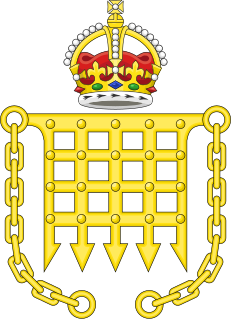 W
WHer Majesty's Body Guard of the Honourable Corps of Gentlemen at Arms is a bodyguard to the British Monarch. Until 17 March 1834, they were known as The Honourable Band of Gentlemen Pensioners.
 W
WHovjägmästare in Sweden was a court official who supervised the Kungliga Hovjägeristaten at the Royal Court of Sweden and the royal hunting parks. The first hovjägmästare was originally the title of the head of the Kungliga Hovjägeristaten and later the title of any among the hovjägmästare. Today there is a hovjägmästare at the Royal Court of Sweden with the task of assisting in the planning of royal hunts. Hovjägmästare can be translated as Master of the Chase or Master of the Buckhounds and Överhovjägmästare can be translated as Grand Master of the Huntsmen.
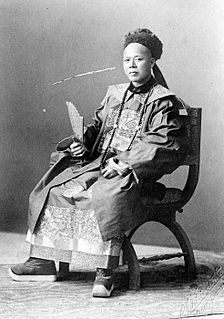 W
WKapitan Cina, also spelled Kapitan China or Capitan China was a high-ranking government position in the civil administration of colonial Indonesia, Malaysia, Singapore, Borneo and in the Philippines. Office holders exercised varying degrees of power and influence: from near-sovereign political and legal jurisdiction over local Chinese communities, to ceremonial precedence for community leaders. Corresponding posts existed for other ethnic groups, such as Kapitan Arab and Kapitan Keling for the local Arab and Indian communities respectively.
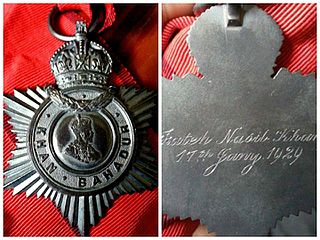 W
WKhan Bahadur – a compound of khan (leader) and bahadur (brave) – was a formal title of respect and honour, which was conferred exclusively on Muslim and other non-Hindu natives of British India. It was one degree higher than the title of Khan Sahib.
 W
WKhan Sahib is a compound of khan (leader) and sahib (master) - was a formal title of respect and honour, which was conferred mainly on Muslim, but also to Parsi, Irani, and Jewish subjects of the British Indian Empire. It was a title one degree lower than Khan Bahadur, but higher than that of Khan.
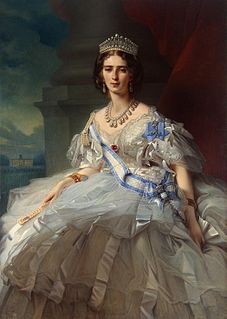 W
WA lady-in-waiting or court lady is a female personal assistant at a court, attending on a royal woman or a high-ranking noblewoman. Historically, in Europe, a lady-in-waiting was often a noblewoman, but of lower rank than the woman to whom she attended. Although she may either have been a retainer or may not have received compensation for the service she rendered, a lady-in-waiting was considered more of a secretary, courtier or companion to her mistress than a servant.
 W
WA Maid of the Bedchamber was a court office for a lady-in-waiting in several European courts.
 W
WA majordomo is a person who speaks, makes arrangements, or takes charge for another. Typically, this is the highest (major) person of a household staff, a head servant who acts on behalf of the owner of a large or significant residence.
 W
WHis Majesty's Marshal of the Realm who heads the Office of the Marshal of the Realm, is the highest official in the Royal Court of Sweden. The Marshal of the Realm is appointed by the monarch and is directly responsible for the organization and affairs of the court, and for maintaining liaison arrangements with the Riksdag and the Prime Minister/Government. Press releases and official statements from the Swedish Royal Family to the press and the public are typically released through the Marshal of the Realm.
 W
WMirza is a royal and noble title. It is also used as a surname or prefix to identify patriarchal lineage.
 W
WMostowfi ol-Mamalek was One of the positions and titles of the Iranian court from the Ilkhanid period to the Qajar era.
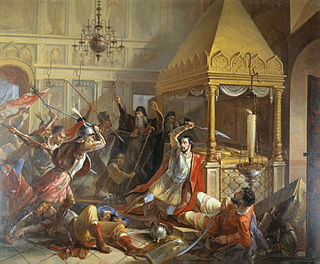 W
WOkolnichy was a Russian boyar in one of the highest ranks close to the Tsar at the court of Moscow rulers from the Mongol invasion of Rus' until the government reform undertaken by Peter the Great. The word is derived from the Russian word for "close," "near," meaning "sitting close to the Tsar." In the middle of the XVI century it became second to boyar.
 W
WA Page of Honour is a ceremonial position in the Royal Household of the Sovereign of the United Kingdom. It requires attendance on state occasions, but does not now involve the daily duties which were once attached to the office of page. The only physical activity involved is usually carrying the long train of the Queen's robes.
 W
WPrincipal, or more formally, Principal of the Holy Patriarchal Church of Lisbon, was the honorific title granted to the canons of the chapter of the Patriarchal See of Lisbon by the papal bull Salvatoris nostri Mater, issued by Pope Benedict XIV in 1740.
 W
WRaja, is a royal title used for Indian monarchs. The title is equivalent to king or princely ruler in the Indian subcontinent and Southeast Asia.
 W
WA retinue is a body of persons "retained" in the service of a noble, royal personage, or dignitary, a suite of "retainers".
 W
WSahib or Saheb is a word of Arabic origin meaning "companion". As a loanword, it has passed into several languages, including Persian, Kurdish, Turkish, Kazakh, Uzbek, Turkmen, Tajik, Crimean Tatar, Urdu, Hindi, Punjabi, Pashto, Bengali, Gujarati, Marathi, Rohingya and Somali. During mediaeval times, it was used as a term of address, either as an official title or an honorific. Now, in South and Central Asia, it's almost exclusively used to give respect to someone lower in social ladder or menial workers. For eg, people address drivers as driver saheb and so on. The honorific has largely been replaced with Sir. It is often shortened to saab.
 W
WThe Sediari pontifici were chair-bearers of the pope on the sedia gestatoria. Originally servants of the papal household, they later became a lay confraternity. The origins of the chair-bearers lie in medieval times, earlier even than the Swiss Guards.
 W
WThis is a list of Somali aristocratic and court titles that were historically used by the Somali people's various sultanates, kingdoms and empires. Also included are the honorifics reserved for Islamic notables as well as traditional leaders and officials within Somali customary law (xeer), in addition to the nobiliary particles set aside for distinguished individuals.
 W
WA sumilher da cortina was an officer of the Portuguese royal household, chosen from among the kingdom's most important prelates, of noble background.
 W
WThe Thampis and Kochammas are the sons and daughters of the maharajahs of Travancore and their consorts belonging to Nair caste
 W
WValet de chambre, or varlet de chambre, was a court appointment introduced in the late Middle Ages, common from the 14th century onwards. Royal households had many persons appointed at any time. While some valets simply waited on the patron, or looked after his clothes and other personal needs, itself potentially a powerful and lucrative position, others had more specialized functions. At the most prestigious level it could be akin to a monarch or ruler's personal secretary, as was the case of Anne de Montmorency at the court of Francis I of France. For noblemen pursuing a career as courtiers, like Étienne de Vesc, it was a common early step on the ladder to higher offices.